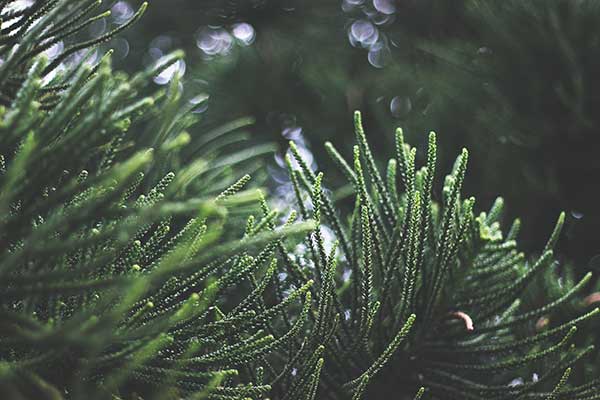It’s a debate that has been dividing people for years. The arguments can get so heated families have sometimes torn apart. OK… that might be an exaggeration. But there are some strong opinions out there about whether real or fake Christmas trees are best.
Those who prefer the real deal love the natural look. The tradition of cutting down a fresh tree and the scent of the outdoors filling the home every holiday season is too precious to pass up.
Taking a tree out of a box and assembling it is undoubtedly less romantic, but it sure is low maintenance and a heck of a lot less messy.
What’s the better choice?
There’s no clear answer! It all comes down to personal preference, and there are pros and cons to both. Believe it or not, there are studies on these kinds of things.
New research released by the American Christmas Tree Association (ACTA) looks at the environmental impact of each option. Even though artificial trees are made of plastic, the study found they’re more eco-friendly if reused for a minimum of five years.
Researchers compared real and fake trees measuring 6.5 feet. For artificial trees, manufacturing and overseas transportation were taken into consideration. For the real trees, factors such as planting, fertilizing, and watering were looked at, keeping in mind that natural trees have a cultivation period of about eight years.
How the trees are disposed of at the end of their usage was also taken into consideration. The options include landfilling, composting, and incineration.
If the trees are used for just one year and then discarded, the ACTA found that real trees have a better impact on the environment. But other studies have shown the average artificial tree is reused for about 10 years, and therefore, they come out as more environmentally sound.
The ACTA says it’s also important to consider the “tree miles” when you’re deciding what to buy. Locally grown (or made) and sold trees are never a bad option. Even when purchasing real ones, they’ve often traveled long distances before finally making it into your tree stand.
Other considerations
Many still believe natural is best, and the National Christmas Tree Association agrees. It argues the real deal comes from and returns to the earth, automatically making it the better option. Real trees are biodegradable, and they can be recycled and used in many ways.
The NCTA reminds consumers that tree farmers have the environment in mind while growing their businesses. For every tree they harvest, at least one new tree is planted. Not only that, but research has proven that growing real Christmas trees helps with carbon sequestration, helping slow the effects of climate change. You can’t argue with that.
Designer trees

No matter where you stand in the Christmas tree debate, the fact remains that times are tough for tree farmers. The simplicity and convenience of the artificial trees have won over the hearts and minds of most people. According to the ACTA, of the 95 million American households that put a tree up over the holidays, 81% favor artificial.
One Canadian research lab, the only of its kind in the world, is looking to give tree farmers the boost they need.
The Christmas Tree Research Center is based in Truro, Nova Scotia, and is dedicated to improving the look and lifespan of balsam fir Christmas trees. A CTV report says researchers are in the midst of creating the SMART Balsam, which is designed to be just as fragrant and beautiful as the common tree, only able to retain its blue-green needles for three months.
The SMART Balsam is being touted as the answer to the crisis facing the tree industry, and might even help save it in Atlantic Canada, says CTV. Tree farmers will no longer have to worry about lost needles during transport, and consumers will spend less time sweeping the floors throughout the holidays.
Researchers were able to identify genetic markers for tree fullness and the ability to retain needles, and the first plantings are expected next year. They promise we won’t be disappointed. The things we can do these days.
So, fake, real, or SMART? Where do you stand in the Christmas tree debate?